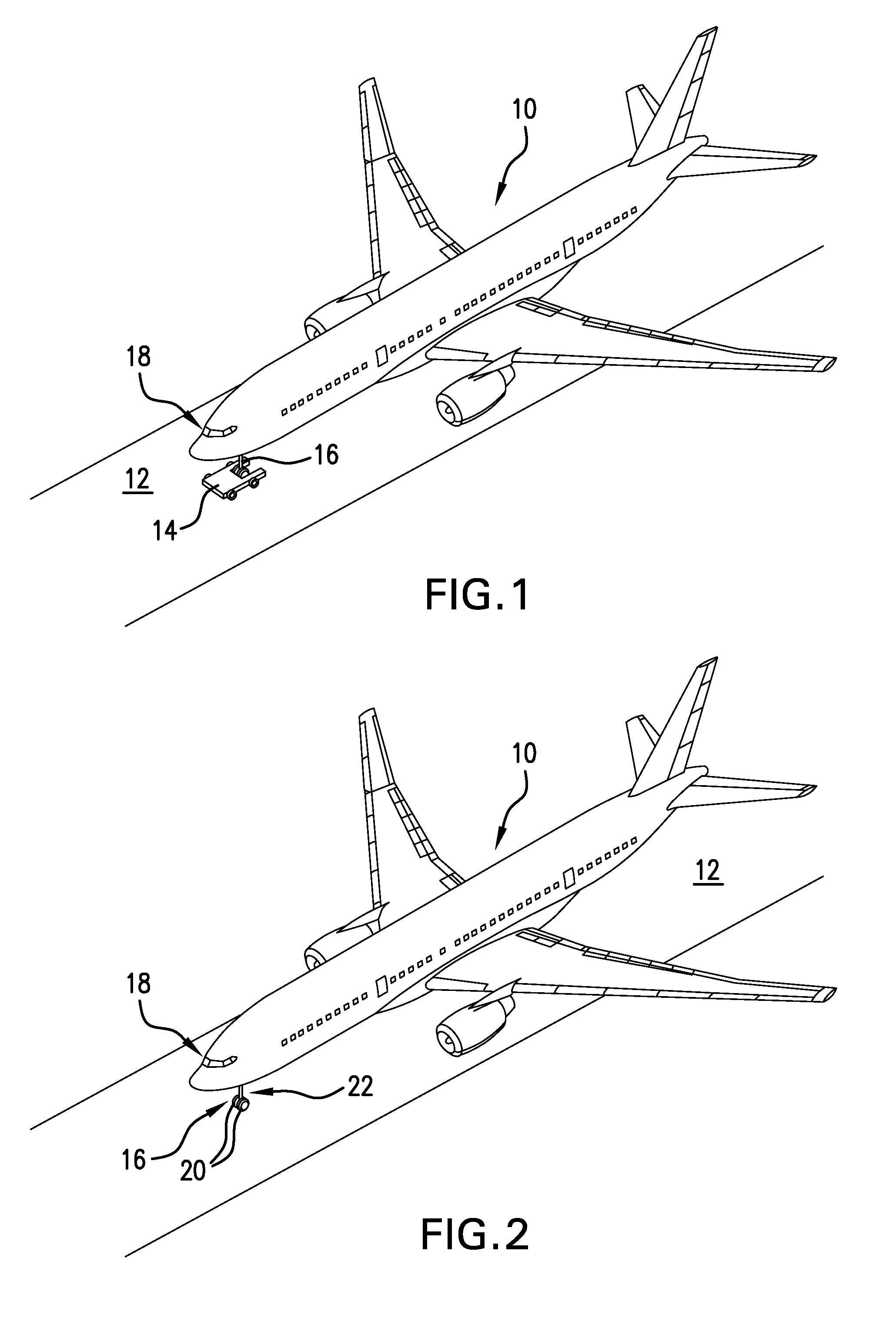Method for increasing landing gear effective life and aircraft landing cycles
a technology for landing gear and effective life, applied in the direction of alighting gear, energy-saving operation measures, transportation and packaging, etc., can solve the problems of very specific flight cycle limits, unsafe life limits, and aircraft cannot guarantee the safe operation of aircraft during additional flight cycles, so as to increase the effective life of landing gear and reduce the maintenance of landing gear , increase the effect of landing or flight cycl
- Summary
- Abstract
- Description
- Claims
- Application Information
AI Technical Summary
Benefits of technology
Problems solved by technology
Method used
Image
Examples
Embodiment Construction
[0026]In today's commercial flight and airport environment, the ground travel of aircraft between landing and takeoff should ideally occur in a way that can safely, efficiently and economically move an aircraft along a potentially congested travel path with a minimum amount of fuel and without damage to aircraft components. Current practice is to use an aircraft's engines to power ground movement between touchdown and arrival and to tow aircraft at pushback until the aircraft's engines can be used for taxi prior to takeoff. Engine use adds to aircraft fuel consumption and noise as well as engine ingestion and other attendant challenges and, consequently, should be substantially eliminated or at least minimized during aircraft ground travel. In some situations, as discussed below, some minimal aircraft engine use can provide necessary electric power when an aircraft is on the ground. The present method substantially eliminates complete reliance on aircraft main engines to move an air...
PUM
 Login to View More
Login to View More Abstract
Description
Claims
Application Information
 Login to View More
Login to View More - R&D
- Intellectual Property
- Life Sciences
- Materials
- Tech Scout
- Unparalleled Data Quality
- Higher Quality Content
- 60% Fewer Hallucinations
Browse by: Latest US Patents, China's latest patents, Technical Efficacy Thesaurus, Application Domain, Technology Topic, Popular Technical Reports.
© 2025 PatSnap. All rights reserved.Legal|Privacy policy|Modern Slavery Act Transparency Statement|Sitemap|About US| Contact US: help@patsnap.com


